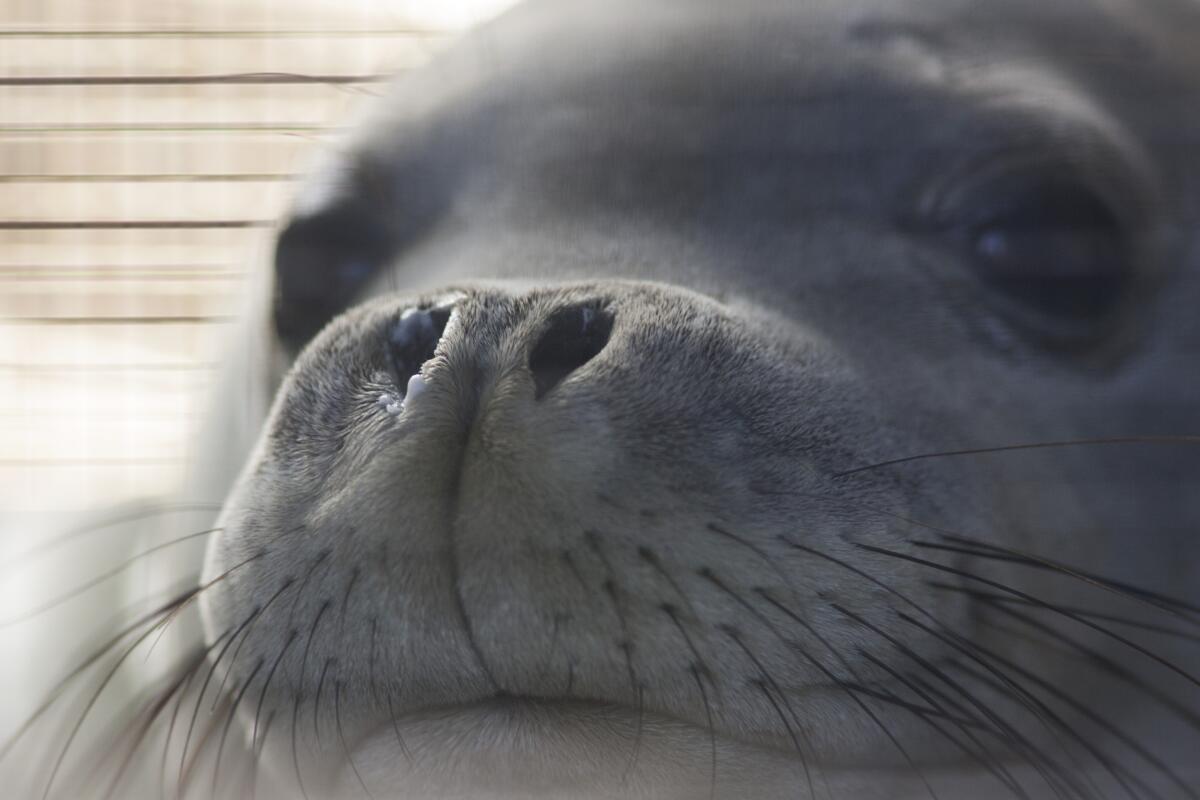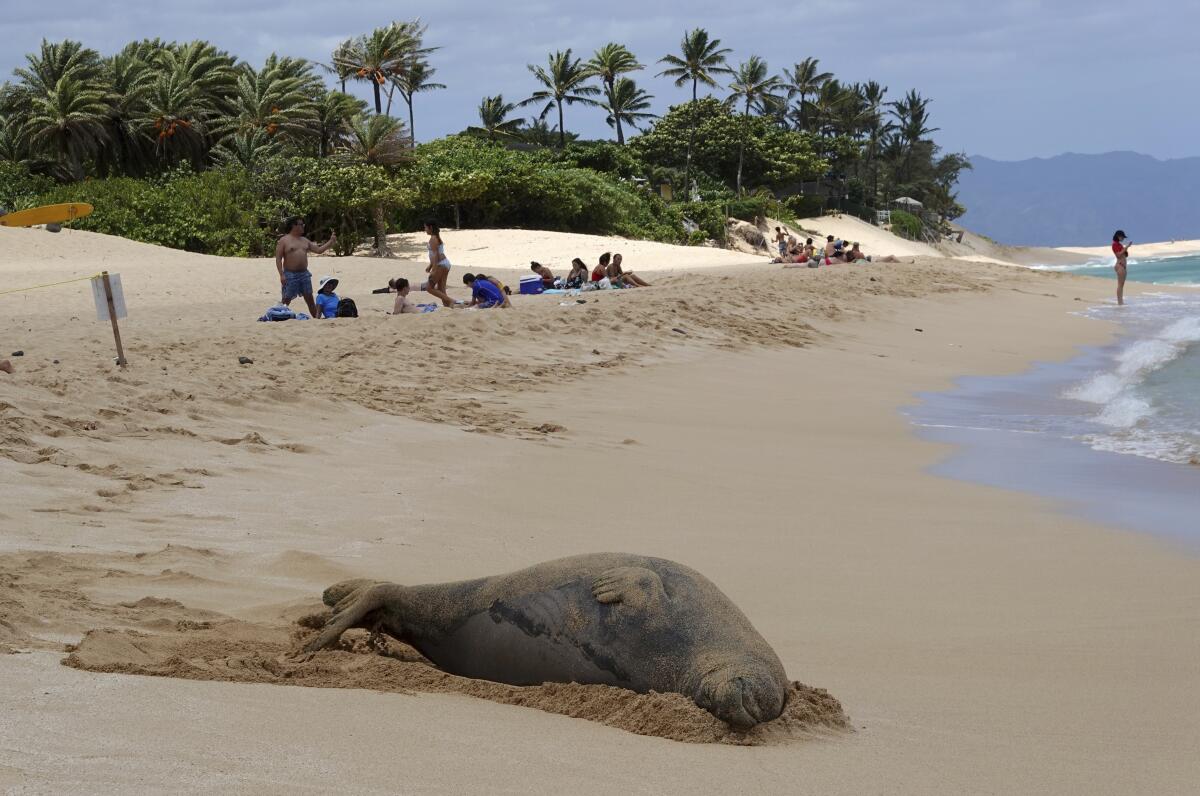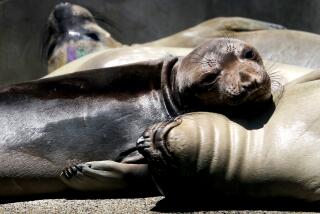Endangered Hawaiian monk seal population highest in two decades

- Share via
HONOLULU — The population of endangered Hawaiian monk seals has surpassed a level not seen in more than two decades, according to federal officials.
National Oceanic and Atmospheric Administration officials this week said that the seal population has steadily increased over the last two years.
Officials estimated the population has grown by more than 100 from 2019-21, bringing the total from 1,435 to 1,570 seals. Monk seals live only in Hawaii, including in the uninhabited Northwestern Hawaiian Islands where most of the animals are found.
The Northwestern Hawaiian Islands are all within the Papahanaumokuakea Marine National Monument, the largest protected marine area in the United States and a UNESCO World Heritage Site.
Michelle Barbieri, the lead scientist at NOAA’s Hawaiian Monk Seal Research Program, said the count shows that conservation efforts have been helping. The group travels across the archipelago to provide treatment and rescue to animals in trouble.
“We are out there ourselves and working with partners to conduct life-saving interventions for seals, prioritizing females, which are going to go on to create the future generation of seals,” Barbieri said. “We’re starting to really see that continued payoff of intervening to save animals’ lives.”
When complete, the 200-foot-long, 165-foot-wide bridge over the 101 Freeway in Agoura Hills will be the largest of its kind in the world.
NOAA has monitored the seal population for almost 40 years. The agency said this is the first time the population has surpassed 1,500 in more than 20 years.
The animals are listed as endangered under the Endangered Species Act and depleted under the Marine Mammal Protection Act.

Officials said that while the trend is promising, concerns remain about survivability as the low-lying islands and atolls the seals live on are threatened by rising sea levels associated with climate change.
Some islands in the region are only a couple of feet above sea level.
“Climate change is definitely something that we’re really worried about,” Barbieri said. “We’re really seeing those impacts, we’re living it now. And it has real ramifications for survival for seals.”
The islets of French Frigate Shoals are home to about 20% of the monk seals in the Northwestern Hawaiian Islands and for a long time hosted the species’ largest subpopulation.
A new hospital has opened in Hawaii with the sole purpose of saving one of the world’s most endangered animals from extinction.
The land mass there has shrunk for decades with some of the islands disappearing entirely.
Whale-Skate, Trig and East islands have all washed away. Whale-Skate and Trig were lost to erosion and East Island was wiped out by Hurricane Walaka in 2018.
Terrestrial habitat loss is just one of the problems facing the population. Seals are often entangled in fishing nets and other marine debris, ingest fishing hooks, and some are targeted and killed by humans.
Monk seal populations declined for decades before the population began to recover in 2013.
Barbieri said that the animals not only play a critical role in the food chain, but they’re also an indicator of the overall health of the ocean.
“If we have healthy monk seals,” Barbieri said, “we know that the ecosystem that is supporting those animals is healthy and thriving.”
More to Read
Sign up for Essential California
The most important California stories and recommendations in your inbox every morning.
You may occasionally receive promotional content from the Los Angeles Times.














